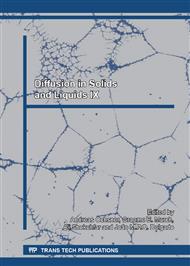p.23
p.28
p.33
p.39
p.44
p.50
p.56
p.61
p.67
Resin Transfer Molding Process: A Numerical Analysis
Abstract:
This work aims to investigate the infiltration of a CaCO3 filled resin using experiments and the PAM-RTM software. A preform of glass fiber mat, with dimensions 320 x 150 x 3.6 mm, has been used for experiments conducted at room temperature, with injection pressure of 0.25bar. The resin contained 10 and 40% CaCO3 content with particle size 38μm. The numerical results were evaluated by direct comparison with experimental data. The flat flow-front profile of the rectilinear flow was reached approximately halfway the length of the mold. It was observed, that the speed of the filling decreases with increasing CaCO3 content and,the higher the amount of CaCO3 in the resin, the lower the permeability of the reinforcement that is found. The reduction in permeability is due to the presence of calcium carbonate particles between the fibers, hindering the resin flow in the fibrous media. The computational fluid flow analysis with the PAM-RTM proved to be an accurate tool study for the processing of composite materials.
Info:
Periodical:
Pages:
44-49
Citation:
Online since:
May 2014
Keywords:
Price:
Сopyright:
© 2014 Trans Tech Publications Ltd. All Rights Reserved
Share:
Citation:


